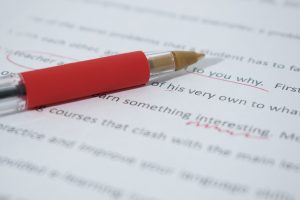31 How to Proofread

As tempting as it might be, the proofreading phase should not be skipped as it’s the last opportunity to mold your textbook into a work that contains coherent writing, consistent styling and layout, and correct grammar and spelling. Perfection is the unattainable goal.
(It’s been said there’s less pressure to create a “perfect”product when creating an open textbook because it can easily be corrected later. However, relaxing standards can give potential adopters a bad impression of your book and even lead to poor-quality book.)
A trained copy editor typically acts as the proofreader, but the proofreader ideally should not be the same individual who copy edited the textbook. In addition, as was stated in the previous chapter, the proofer should not be the author.
Make a plan
Well in advance of this latter stage, think about and discuss with the proofreader what the requirements will be, and provide them with a clear plan. Many of the same items noted in the How to Copy Edit chapter can be referenced in addition to the items listed below.
- How many times should the textbook be proofread? Proofreading is typically an iterative process whereby a manuscript is scanned one or more times until it is error free — or as close to error free as is humanly possible. However, if time and budget are a concern, it might be decided to enlist only one or two rounds of proofreading.
- Provide the proofreader with the most recent version of the style sheet and style guides as references. (See Create a Style Sheet and Appendix 2: Style Guide.)
- Some proofreaders report that it’s easier to identify errors on the printed page. If the textbook has been written in an online system, clarify if this is the proofreader’s preferred manner of working, and whether there is time and money to accommodate this extra step. (Corrections made on the printed page must be entered into the digital version of the book by either the proofreader or someone else. If not the proofreader, make sure the chosen individual is highly skilled in detail work.)
Authors should not make changes to textbook chapters once they have been proofread as this can undo the proofreader’s work.
Attributions
Correcting has been designated to the public domain (CC0).

